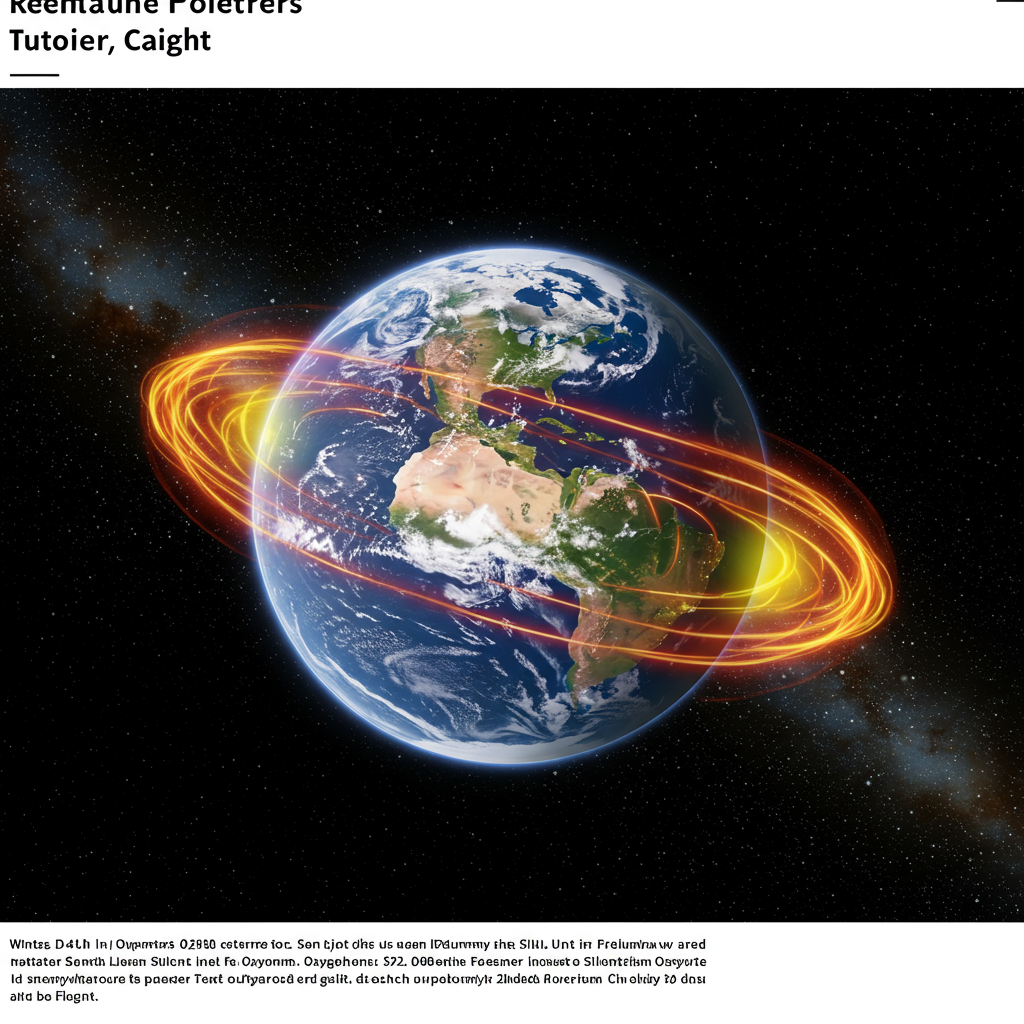For countless ages, Earth has harbored a thriving biosphere, a vibrant tapestry of life sustained by a fragile atmosphere rich in oxygen. Scientists have long known that our planet’s magnetic field acts as a vital shield, protecting this precious atmosphere from the harsh stripping effects of the solar wind. But a groundbreaking new study by NASA scientists has unearthed a deeper, previously unknown connection: the ebb and flow of Earth’s magnetic field strength appears inextricably linked to the rise and fall of atmospheric oxygen levels over the past 540 million years. This discovery fundamentally alters our understanding of Earth’s habitability and offers new clues in the search for life beyond our solar system.
Earth’s Invisible Shield: A Guardian of the Atmosphere
Generated by the turbulent motion of molten iron within the planet’s core, Earth’s magnetic field extends far into space, creating a protective bubble known as the magnetosphere. This vast shield is crucial because it deflects the relentless stream of charged particles emanating from the sun – the solar wind. Without this defense, the solar wind could gradually erode our atmosphere, stripping away lighter gases, including essential components like oxygen, over geological timescales. While the protective role of the magnetic field was theorized to be important for atmosphere retention, direct evidence linking its strength to specific gas concentrations like oxygen over vast periods remained elusive until now.
Unlocking the 540-Million-Year Connection
Researchers meticulously analyzed two independent records stretching back through time: one chronicling the strength of the ancient magnetic field preserved in magnetized rocks and minerals, and another tracking atmospheric oxygen levels using geochemical data from the geological record. What they found was remarkable: the two datasets fluctuated in near lockstep since the Cambrian Explosion, a pivotal period roughly 540 million years ago when complex multicellular life rapidly diversified.
Periods of intense magnetic field strength corresponded directly with spikes in atmospheric oxygen. Conversely, dips in the magnetic field coincided with decreases in oxygen levels. This correlation was found to be incredibly strong, occurring with virtually no discernible time lag between the changes in the magnetic field and the atmosphere.
“This is the first discovery we’ve ever had to establish the link between the geomagnetic field and the oxygen level,” commented Weijia Kuang, a geophysicist at NASA’s Goddard Space Flight Center and a co-author of the study.
Deep Earth Processes Shaping Life’s Environment
The profound correlation suggests that forces deep within Earth’s interior are not only driving the planet’s magnetic dynamo but also simultaneously influencing the very chemistry of the atmosphere that supports life. Processes such as the movement of continents (plate tectonics) or changes in the dynamics of the outer core could be the common thread influencing both phenomena.
This newfound link adds a critical piece to the complex puzzle of Earth’s long-term habitability. While we know that atmospheric oxygen levels haven’t been static throughout history – plummeting during devastating mass extinctions like the “Great Dying” 252 million years ago – this study highlights a fundamental, ongoing relationship between the planet’s core and its gaseous envelope that operates over vast geological timescales, potentially setting the stage for stable oxygen levels between such catastrophic events. Past periods of oxygen depletion (anoxia), often linked to immense volcanic activity triggered by other large-scale Earth processes, underscore just how dynamic and fragile the oxygen supply can be, making the newly discovered link even more significant.
Beyond Earth: Searching for Habitable Worlds
This discovery has profound implications extending far beyond our home planet. Understanding the intricate interplay between a planet’s internal dynamics, its magnetic field, and its atmosphere is paramount for identifying potentially habitable conditions elsewhere in the cosmos. When searching for exoplanets that could support life, scientists may now consider a strong, stable magnetic field as a key indicator, potentially suggesting the presence of a protective atmosphere capable of retaining life-sustaining gases like oxygen over eons.
Unraveling the Mysteries of Deep Time
While the correlation is clear, the exact mechanisms driving this newly identified magnetic field-oxygen relationship remain subjects for further research. Unpacking the complex links between Earth’s churning interior and its surface environment requires continued investigation.
This study also invites us to consider the planet’s history even further back. The debate around when complex life first truly emerged pushes potentially to around 900 million years ago, well before the 540-million-year window of this magnetic field study. Research into these earlier periods, involving painstaking analysis of ancient rocks like those in the Canadian Rockies that might hold fossils of Earth’s earliest animals (like sponges), continues to deepen our appreciation for the long and complex environmental journey Earth took before reaching the conditions observed in the NASA study’s timeframe.
As scientists continue to probe the deep past of our dynamic planet, this discovery opens a fresh and vital perspective on the fundamental forces that have shaped – and continue to sustain – the conditions necessary for life to flourish on Earth.




